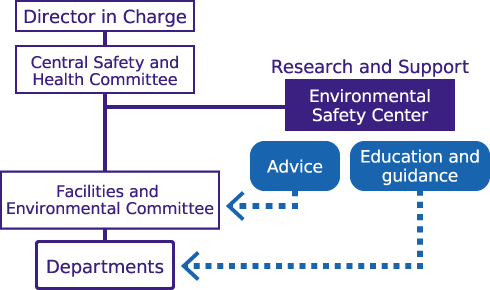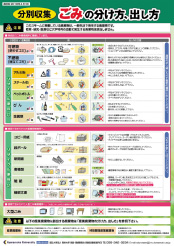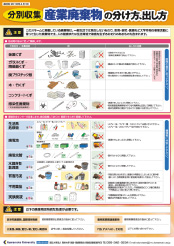3R Waste
Waste Management at Kumamoto University
Basic matters related to waste disposal at Kumamoto University
- Sorting waste materials
-
- 1. Waste material sorting at Kumamoto University will be carried out based on the “Sorting and Collecting: How to Separate Trash and How it is Collected Guidebook” (published by the Environmental Committee on Sep. 24, 2009) and the Kumamoto University Waste Sorting Categories Appendix.
- Storage
-
- 2. Waste storage at Kumamoto University shall be managed by the department in ways that do not adversely impact the environment, safety, or hygiene.
- Collection, transportation, and disposal
-
- 3. The collection, transportation, and disposal of Kumamoto University waste shall be entrusted by the department to a general waste disposal or industrial waste disposal contractor. However, the collection, transportation, and disposal of combustibles, incombustible materials, bottles, steel cans, aluminum cans, PET bottles, and metals will be commissioned by the university (excluding affiliated hospitals) to be handled by a general waste disposal contractor. Additionally, the collection, transportation, and disposal of specially controlled industrial waste – such as fluorescent tubes, disposable batteries, lead-acid batteries, dangerous bio-materials, hazardous sludge, equipment containing mercury, and chemicals – will be handled by an industrial waste disposal company commissioned by the Environmental Safety Center.
- 4. When commissioning a general waste disposal or industrial waste disposal contractor to handle the collection,transportation, and/or disposal of waste, the person in charge of the commission contract must confirm the various processes involved.
- 5. The person in charge of the commission contract must calculate the emissions for each waste type.
- Miscellaneous
-
- 6. If review of these processes becomes necessary, such will be decided by the Facilities and Environmental Committee
Nov. 30, 2011 - Approved by agreement of the Facilities and Environmental Committee
Waste management system

How to separate and dispose of trash at Kumamoto University
| Type | Classification | Storage and collection methods | Environmental Safety Center |
|---|---|---|---|
| Business-related general waste | Combustibles | Refuse collection point | |
| Incombustibles | Refuse collection point | ||
| Recycled raw materials | Aluminum cans | Refuse collection point | |
| Steel cans | Refuse collection point | ||
| PET bottles | Refuse collection point | ||
| Glass bottles | Refuse collection point | ||
| Metals | Refuse collection point | ||
| Copy paper | As directed by the department | ||
| Cardboard paper | As directed by the department | ||
| Newspaper | As directed by the department | ||
| Books | As directed by the department | ||
| Magazines | As directed by the department | ||
| Classified documents | As directed by the department | ||
| Industrial waste (including specially controlled industrial waste) |
Oversized garbage | As directed by the department | |
| Glass and ceramic ware | As directed by the department | ||
| Waste plastics | As directed by the department | ||
| Wood and bamboo waste | As directed by the department | ||
| Concrete scrap | As directed by the department | ||
| Infectious waste | As directed by the department | ||
| Domestic hazardous materials | Self-storage or departmental storage | ○ | |
| Batteries | Self-storage or departmental storage | ○ | |
| Fluorescent tubes | Self-storage or departmental storage | ○ | |
| Equipment containing mercury | Self-storage or departmental storage | ○ | |
| Hazardous sludge | Self-storage or departmental storage | ○ | |
| Unnecessary chemicals | Self-storage or departmental storage | ○ | |
| Experiment waste liquids | Self-storage or departmental storage | ○ |















